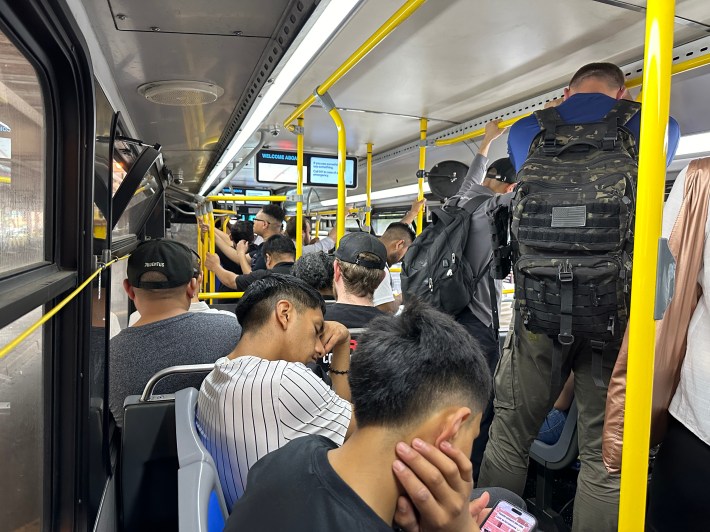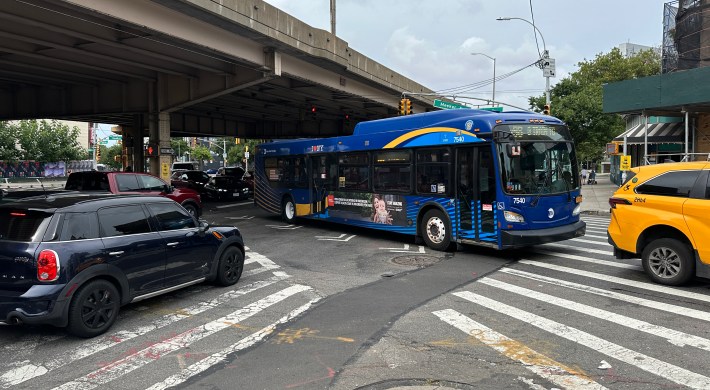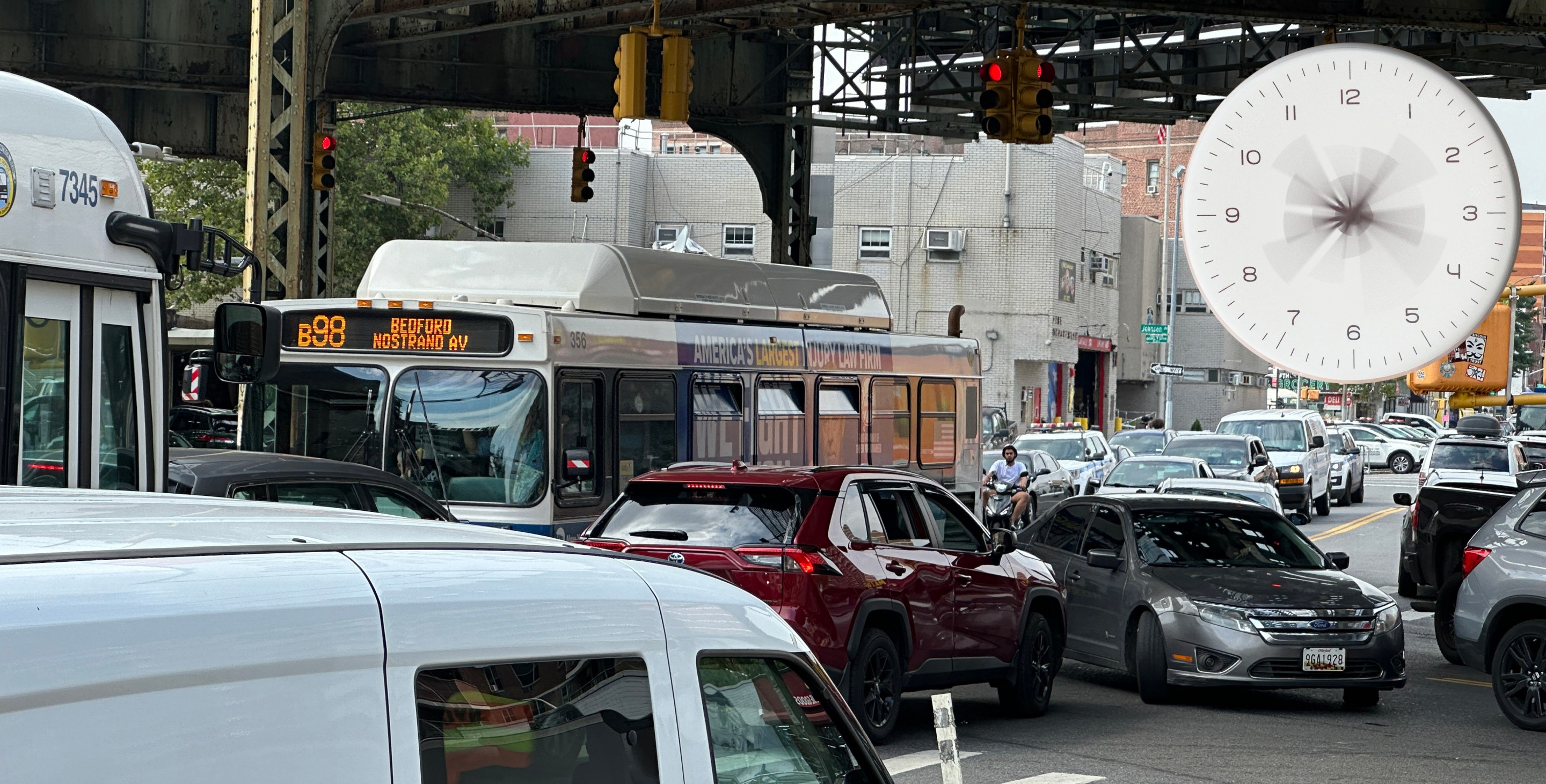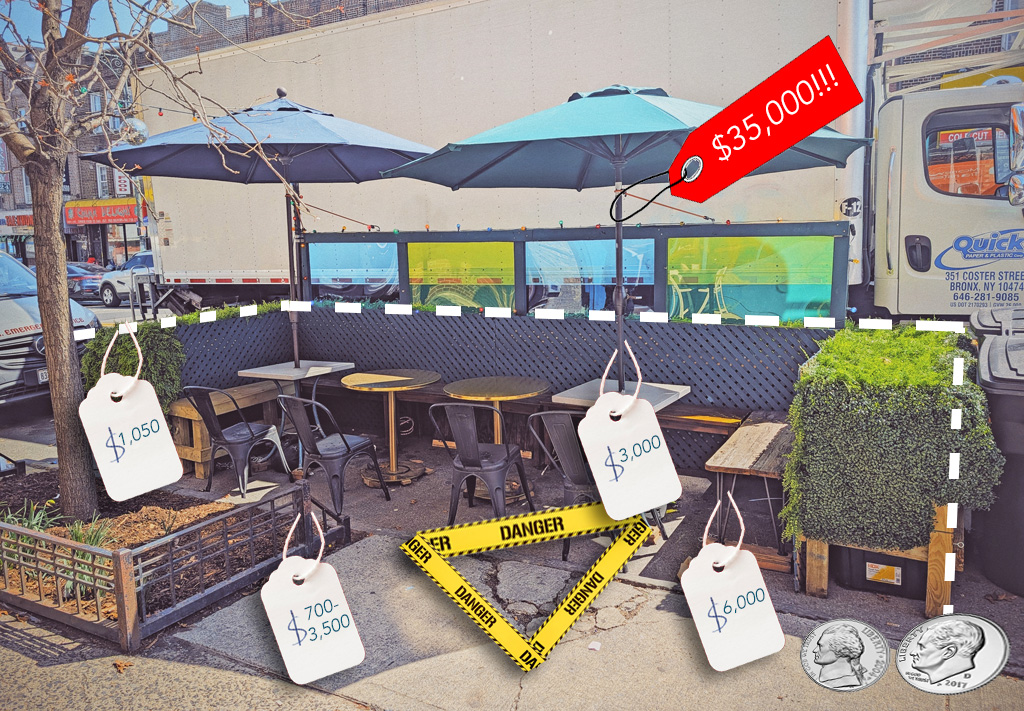G train riders are already sick of the shuttle.
Commuters who have been forced since June 28 to take a shuttle bus to reach stations between the Court Square and Bedford-Nostrand stops say the shuttle bus — while necessary to keep the subway in a state of good repair of course — is just so frustrating!
“I don’t like the shuttle bus. I have to wait between five and 15 minutes,” said M.P., who declined to give his name, but said he takes the G train during the morning and afternoon rush hours when traffic is at its worst. "The service is slow. I can understand why they did it, but rush hours are the wrong time.”
Most riders, including M.P. understand that train work — in this case a long-overdue $622 million track and signal upgrade — needs to be done, but shuttle buses are constantly blocked by traffic because city officials do not typically provide them with dedicated lanes.
As a result, the G train shuttle — also known as the B98 — takes much longer than the subway, even when the MTA does keep its promise of running shuttles four minutes apart during rush hour. Streetsblog rode the shuttle repeatedly for a few days last week and found that a 15- to 20-minute end-to-end subway ride is now a 40- to 51-minute shuttle bus ride.
And because a single shuttle bus is much smaller than a six- or eight-car subway, the shuttle bus is often packed, which we found at the Greenpoint Avenue/Leonard Street station, where more than two dozen people were waiting to get on. In an instant, a reasonably crowded bus became completely full.

“The shutdown of the G train has affected me a lot," said Kiara Rodriguez, who formerly took the G to the L at Metropolitan Avenue, but now takes the shuttle. "It has been a headache honestly. Especially sometimes when coming back home, the bus will be super packed.”
Greenpoint elected officials had warned about the traffic along the shuttle route, so they're not surprised at what's going on on the street.
"We pushed for dedicated busways that would be free of traffic and double-parked cars," said Council Member Lincoln Restler. "These slow-moving buses were an unfortunate and avoidable inevitability" of having the request for car-free bus routes disregarded by the city Department of Transportation and the MTA.
The G train shut down has been frustrating & inconvenient for Greenpointers & everyone traveling around Brooklyn this summer.
— Lincoln Restler (@LincolnRestler) July 16, 2024
We’re continuing to push the @MTA to more aggressively enforce against double parking to improve the efficiency of shuttle buses.https://t.co/eWChmMnjdS
Predictably, the congestion is worst around Marcy Avenue and Willoughby Avenue, thanks to double parking.
“Sometimes there’s lots of traffic on my way to work, especially around Jackson Avenue [in Queens] because more people tend to get on towards mid-day which makes my commute more hectic. I really prefer taking the G train, it is just faster,” said Litzi Paredes.
Fellow straphanger Elhadji Ly got philosophical: “There are some days where I have to deal with bad transportation service and it shouldn’t be this way."

After Phase II, the work — and requisite shuttle — will move between Bedford-Nostrand and Church Avenue from Aug. 12 to Sept. 3. That work will require G train and F train users to jump the shuttle through a stretch of Brooklyn that has even more traffic.
The MTA says the work will fully upgrade the crosstown line by 2027, which will improve service by replacing the existing "fixed-block signal system" with a modern communications-based train control system. That may sound generic, but the MTA boasts that its new "wireless connectivity" system "keep trains in constant contact with a centralized system that controls their movement."
The existing signaling system "relies on technology that dates back to the opening of the subway 120 years ago," the agency said.






